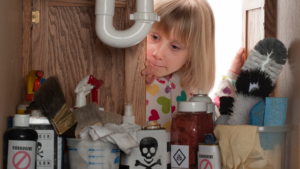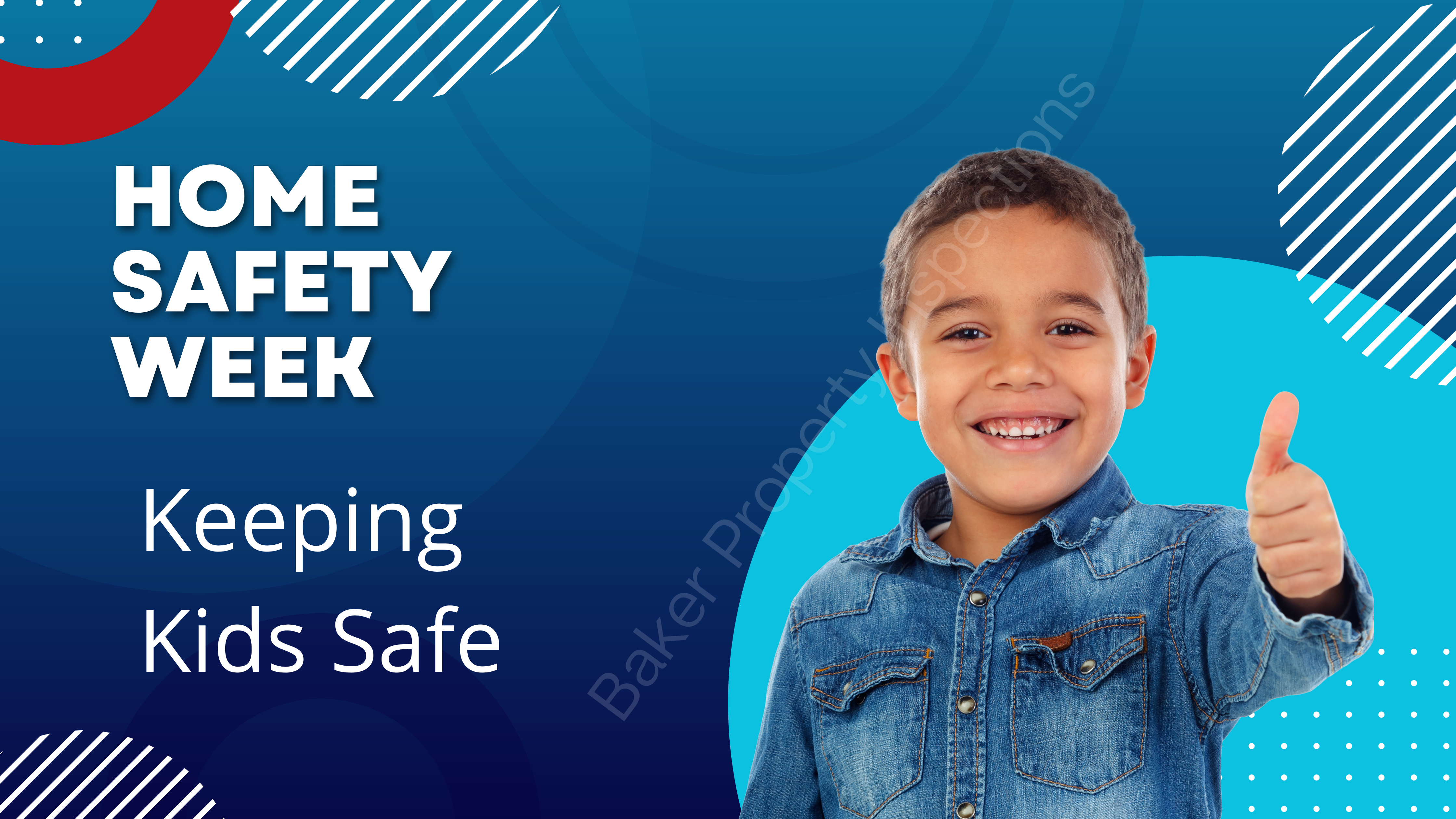Home Safety and Security Week: Part 2
Family Matters: Keeping Kids Safe
Welcome to Part 2 of our blog series on home safety and security. In this segment, we’ll delve into creating a safe and child-friendly living environment within your home. As a home inspector, I understand the importance of providing a space where children can explore, learn, and play without unnecessary risks. Although we can’t cover every aspect of keeping your children safe in the home, let’s explore essential tips and precautions for well-being of your little ones.
Secure Stairways and Balconies
Stairways and balconies can pose significant safety hazards for young children, and I frequently discover defects related to these home areas. Install sturdy handrails along staircases to provide support and prevent falls. Consider installing safety gates at the top and bottom of stairways to restrict access. Ensure balustrades on balconies are secure and have appropriate spacing to prevent children from squeezing through or climbing over. Regularly inspect these areas to identify any potential risks or necessary repairs. Of course, I always address these concerns during my inspection, but you should continue to check for unsafe areas often.
Childproof Electrical Outlets and Cords
First and foremost, always test GFCIs monthly to ensure that they are working. These help to protect every member of your home. Beyond that, we all know that electrical outlets and cords are enticing to curious young minds. Protect your children by installing outlet covers or using childproof outlets throughout your home. Secure loose cords out of reach or use cord organizers to minimize tripping hazards. Educate your children about the dangers of playing with electrical devices and reinforce the importance of seeking adult assistance.
Keep Water Temperature Safe
As a diligent home inspector concerned about your family’s safety, it’s always essential to address water heater temperatures, especially when children are present. The recommended safe water temperature for homes with children is 120 degrees Fahrenheit to prevent scalding injuries. Setting the water heater temperature at this level reduces the risk of accidental burns while still providing comfortable hot water for daily use. Hot water at a temperature of 140 degrees Fahrenheit can cause burns in as little as 3 seconds of exposure.
Lock Up Hazardous Materials
It may seem obvious but many parents mistakenly overlook this simple task: household cleaners, medications, and other hazardous materials should be stored securely, out of reach of children. This includes weapons. I often see all of these items left out in the open during inspections. If you have children in the home, be sure to take care. Utilize childproof locks or cabinets with child safety latches to prevent access. Store toxic substances in their original containers with clear labeling, and dispose of expired or unused medications properly.

Ensure Furniture Stability
Children are naturally curious and love to climb and explore their surroundings. It is crucial to ensure that furniture, such as bookshelves, dressers, and TV stands, is securely anchored to the wall using anti-tip devices. Check furniture stability regularly, tighten any loose screws or connections, and repair or replace damaged furniture as needed. Avoid placing heavy objects or toys on top of furniture that could potentially cause it to become unstable. It can be easy to forget that, just because we aren’t likely to shake a bookcase with a plant on top, doesn’t mean a child won’t.
Prioritize Kitchen Safety
The kitchen can be a hub of activity and potential hazards, especially for young children. When it comes to kitchen safety, ensure that dangerous items such as knives, scissors, and sharp utensils are stored securely in locked drawers or cabinets. Install safety latches or locks on cabinets containing cleaning supplies, chemicals, alcohol, and other hazardous materials. Keep small appliances, such as toasters and blenders, out of reach when not in use. Use stove knob covers to prevent accidental burner activation, and consider installing a stove guard to create a barrier between curious hands and hot surfaces.
Furthermore, as part of my inspection process, I always check for the presence of anti-tip devices on stoves. These devices are designed to prevent stoves from tipping over if excessive weight is applied to the open oven door or if a child attempts to climb on it. Ensuring the proper installation and functionality of these anti-tip devices is a critical aspect of kitchen safety. Not sure if you have one? Place your hand on the back of your oven and pull forward. It should not leave the floor.
Remember, while these safety measures help mitigate risks, adult supervision is still paramount, especially in the kitchen. Never leave young children unattended while cooking or operating kitchen appliances. By implementing these precautions and being vigilant in the kitchen, you can create a safer environment for your family and enjoy peace of mind.
As your trusted home inspector, I prioritize your family’s safety and always try to ensure that potential hazards, including kitchen-related risks, are thoroughly evaluated during inspections. For now, learn more about childproofing your home from the US Consumer Product Safety Commission here.
Disclaimer: The information provided in this blog post is for general guidance only and should not replace professional advice or assessment. For comprehensive child safety guidance, consult with childproofing experts or your local safety organizations.
#friendlyexperiencedthorough #homeinspection #luxuryhomeinspections #newconstructioninspections
Serving Southwest Michigan including Portage, Paw Paw, Mattawan, Lawrence, Scotts, and more. Learn more at www.bakerpropertyinspections.com

